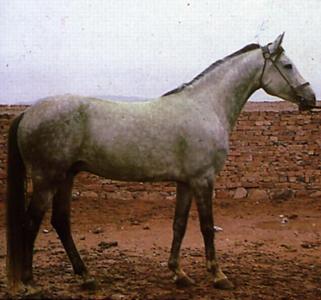Type the name of the breed you're looking for below
[wpdreams_ajaxsearchlite] Don't see the breed your're looking for? Click here and let us know!
Iomud horse
| Country Of Origin | Turkmenistan |
| History and Background | The Iomud is a breed of light horse from Turkmenistan. Like other breeds of Turkmen horse, it is named for the Turkmen tribe that raised it, the Iomud. Both the name of the horse and the name of the Turkmen clan may be spelt in many ways, including Iomud, Yomud, Yamud and Yomut. The Iomud horse is raised in Turkmenistan, particularly in the velayat of Daşoguz; in Uzbekistan; in Karakalpakstan (now part of Uzbekistan), particularly in the Khwarezm region; and in Iraq, Iran and Turkey. Unlike the Akhal-Teke, it usually kept in herds in desert or semi-desert areas. Like other breeds of Turkmen horse – including the Akhal-Teke, the Ersari, the Goklan, the Salor and the Sarik – the Iomud breed is named for the Turkmen tribe that formed it, the Iomud. The Iomud people occupy the northern part of modern Turkmenistan, from the eastern shores of the Caspian Sea in the west to the area of Daşoguz, on the northern edge of the Karakum Desert, in the north-east. They are principally concentrated in the velayats of Balkan and Daşoguz, and this is considered the area of origin of the Iomud horse. The early history of the Iomud breed, like that of Turkmen horses in general, is not clear. The qualities of Turkmen horses, and the differences between the various breeds, were recognised by western travellers in the area in the eighteenth and nineteenth centuries. Clement Augustus de Bode wrote in 1848 that the Tekke horses had the best endurance, and were preferred to pure-bred Arabs, while the Iomud and the Goklan were faster and more lightly built. In the twentieth century numbers of the Iomud breed declined. In 1980, in the Soviet era, the total number was recorded as 964, of which 616 were considered pure-bred. In 1983 stud farms were set up with the aim of increasing the number of breeding mares from 140 to about 250. A conservation farm was also established in the Gyzyletrek district, in south-west Turkmenistan. The Iomud contributed significantly to the development of the Lokai breed in Tajikistan. |
| Use Today | Riding horse, Pack horse, Racing horse |
| Height | 14.2 to 15.2 hands high (57-61 inches, 145-155 centimeters) |
| Colour | Black, Chestnut, Grey, |
| Characteristics | Its body shape, although muscular, is rather compact and has a relatively small frame. The head’s profile is well-proportioned with a neck that is of medium length. The chest is not wide and the limbs are characterized by strong and powerful hooves. The horse’s movements are fluid, soft, and floating; it is thus a very comfortable mount (though it is thought to have a fast walk). Due to its jumping ability and endurance, the Iomud is also well-suited to the sport of cross-country racing. |
| Personality and Temperament | omud horses have remarkable endurance. According to local information collected in 1937, they could cover the 800 km from Daşoguz to Etrek in seven days. They can carry 120 kg without difficulty in mountain or desert terrain. |
| Other Considerations | The Iomud is a hardy, desert horse that requires minimal care. In fact, it is accustomed to scarce food and water rations. |



